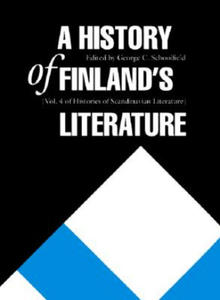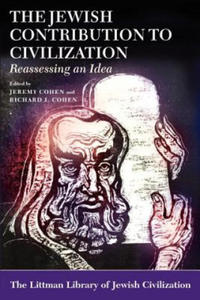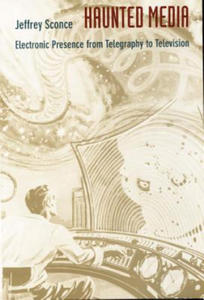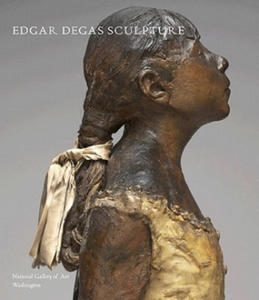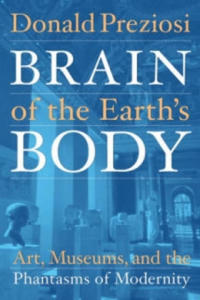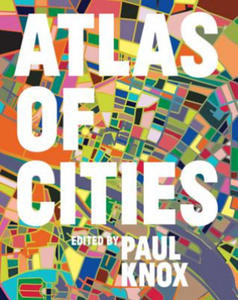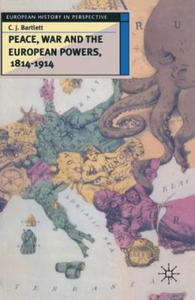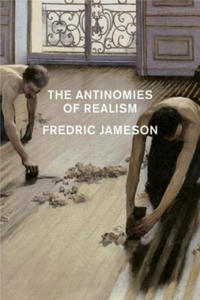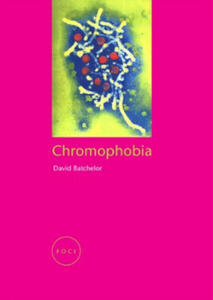libristo more nineteenth century studies 16345602
- znaleziono 22 produkty w 3 sklepach
More Nineteenth Century Studies
Książki Obcojęzyczne>Nieprzypisane
0x005995d900000000
Sklep: Gigant.pl
Philanthropy Patronage & Civil Society Indiana University Press
Inne 1
In "Philanthropy, Patronage, and Civil Society", Thomas Adam has assembled a comparative set of case studies that challenge long-held and little-studied assumptions about the modern development of philanthropy. Generally limited to a post-1930s American context, histories of philanthropy have often neglected European patterns of giving and the importance of financial patronage in the nineteenth century. It has long been assumed, for example, that Germany never developed civic traditions of philanthropy as in the United States, but German patronage and philanthropy in the nineteenth century reveal a once active culture of giving. Nineteenth-century German museums, art galleries, and social housing projects were not only privately founded and supported, they were also blueprints for the creation of similar public institutions in North America. The comparative method of the essays helps to reveal the important civic and cultural role played by philanthropy, demonstrating for example, the place of philanthropy in the development of middle-class Jewish culture and identity in Germany and North America. The essays show the extent to which civic institutions were dependent on private support, and, perhaps even more importantly, how the wealthy classes defined themselves through their philanthropic activities. By observing the giving activities of each other, newly rich Germans and North Americans developed a sense of class entitlement and identity that transcended national boundaries. Students and scholars of philanthropy, class and group identity, and transatlantic cultural relationships should welcome the new research presented in this volume.
Sklep: Albertus.pl
History of Finland's Literature University of Nebraska Press
Książki / Literatura obcojęzyczna
The literature of Finland is bilingual, with lively and extensive traditions in both Finnish and Swedish. This history covers both literary traditions in detail. The volume's first section, on Finnish-language literature, consists of a series of connected chapters by leading authorities within the field. It opens with a consideration of the folk literature in Finnish that flourished during the Middle Ages and then examines the more recent history of Finnish-language literature, with special emphasis placed on writings from the nineteenth and twentieth centuries. The second part of the book provides an examination of Finland's Swedish-language literature from the late fifteenth century through the early nineteenth century. Subsequent chapters trace developments in Finland's Swedish-language literature during the nineteenth and twentieth centuries. A survey of children's literature-from both the Finnish- and Swedish-language traditions-concludes this exceptionally thorough volume George C. Schoolfield is a professor emeritus of German and Scandinavian literatures at Yale University.He is the former editor of Scandinavian Studies and author of many books on Finland's literature and cultural history, most recently Helsinki of the Czars: A Cultural History, 1808-1918.
Sklep: Libristo.pl
Jewish Contribution to Civilization The Littman Library of Jewish Civilization
Książki / Literatura obcojęzyczna
The biblical idea of a distinct 'Jewish contribution to civilization' continues to engage Jews and non-Jews alike. This book seeks neither to document nor to discredit the notion, but rather to investigate the idea itself as it has been understood from the seventeenth century to the present. It explores the role that the concept has played in Jewish self-definition, how it has influenced the political, social, and cultural history of the Jews and of others, and whether discussion of the notion still has relevance in the world today. The book offers a broad spectrum of academic opinion: from tempered advocacy to reasoned disavowal, with many variations on the theme in between. It attempts to illustrate the centrality of the question in modern Jewish culture in general, and its importance for modern Jewish studies in particular. Part I addresses the idea itself and considers its ramifications. Richard I. Cohen focuses on the nexus between notions of 'Jewish contribution' and those of 'Jewish superiority" David N.Myers shifts the focus from 'contribution' to 'civilization', arguing that the latter term often served the interests of Jewish intellectuals far better, and Moshe Rosman shows how the current emphasis on multiculturalism has given the idea of a 'Jewish contribution' new life. Part II turns to the relationship between Judaism and other monotheistic cultures. Elliott Horowitz's essay on the sabbath serves as an instructive test-case for the dynamic and complexity of the 'contribution' debate and a pointer to more general, theoretical issues. David Berger expands on these in his account of how discussion of Christianity's Jewish legacy developed in the late nineteenth and twentieth centuries, and Susannah Heschel shows how the Jewish-Christian encounter has influenced the study of other non-Western 'others'. Daniel Schroeter raises revealing questions about the altogether Eurocentric character of the 'contribution' discourse, which also bore heavily on perceptions of Jews and Judaism in the world of Islam. Part III introduces us to various applications and consequences of the debate.Yaacov Shavit probes the delicate balance forged by nineteenth-century German Jewish intellectuals in defining their identity. Mark Gelber moves the focus to the present and considers the post-war renewal of German Jewish culture and the birth of German-Jewish studies in the context of the 'contribution' discourse. Bringing the volume to its conclusion, David Biale compares three overviews of Jewish culture and civilization published in America in the twentieth and twenty-first-centuries. CONTRIBUTORS David Berger, David Biale, Jeremy Cohen, Richard I. Cohen, Mark Gelber, Susannah Heschel, Elliott Horowitz, David N. Myers, Moshe Rosman, Daniel Schroeter, Yaacov Shavit
Sklep: Libristo.pl
Haunted Media Duke University Press
Książki / Literatura obcojęzyczna
In Haunted Media Jeffrey Sconce examines American culture's persistent association of new electronic media - from the invention of the telegraph to the introduction of television and computers - with paranormal or spiritual phenomena. By offering a historical analysis of the relation between communication technologies, discourses of modernity, and metaphysical preoccupations, Sconce demonstrates how accounts of "electronic presence" have gradually changed over the decades from a fascination with the boundaries of space and time to a more generalised anxiety over the seeming sovereignty of technology. Sconce focuses on five important cultural moments in the history of telecommunication from the mid-nineteenth century to the present: the advent of telegraphy; the arrival of wireless communication; radio's transformation into network broadcasting; the introduction of television; and contemporary debates over computers, cyberspace, and virtual reality.In the process of examining the trajectory of these technological innovations, he discusses topics such as the rise of spiritualism as a utopian response to the electronic powers presented by telegraphy and how radio, in the twentieth century, came to be regarded as a way of connecting to a more atomised vision of the afterlife. Sconce also considers how an early preoccupation with extraterrestrial radio communications transformed during the network era into more unsettling fantasies of mediated annihilation, culminating with Orson Welles' legendary broadcast of War of the Worlds. Likewise, in his exploration of the early years of television, Sconce describes how programs such as The Twilight Zone and The Outer Limits continued to feed the fantastical and increasingly paranoid public imagination of electronic media. Finally, Sconce discusses the rise of postmodern media criticism as yet another occult fiction of electronic presence, a mythology that continues to dominate contemporary debates over television, cyberspace, virtual reality, and the Internet.As an engaging cultural history of telecommunications, Haunted Media will interest a wide range of readers including students and scholars of media, history, American studies, cultural studies, and literary and social theory.
Sklep: Libristo.pl
Creeks & Southerners University of Nebraska Press
Inne 1
Creeks and Southerners examines the families created by the hundreds of intermarriages between Creek Indian women and European American men in the southeastern United States during the eighteenth and early nineteenth century. Called "Indian countrymen" at the time, these intermarried white men moved into their wives' villages in what is now Florida, Georgia, and Alabama. By doing so, they obtained new homes, familial obligations, occupations, and identities. At the same time, however, they maintained many of their ties to white American society and as a result entered the historical record in large numbers. Creeks and Southerners studies the ways in which many children of these relationships lived simultaneously as Creek Indians and white Southerners. By carefully altering their physical appearances, choosing appropriate clothing, learning multiple languages, embracing maternal and paternal kinsmen and kinswomen, and balancing their loyalties, the children of intermarriages found ways to bridge what seemed to be an unbridgeable divide. Many became prominent Creek political leaders and warriors, played central roles in the lucrative deerskin trade, built inns and taverns to cater to the needs of European American travelers, frequently moved between colonial American and Native communities, and served both European American and Creek officials as interpreters, assistants, and travel escorts. The fortunes of these bicultural children reflect the changing nature of Creek-white relations, which became less flexible and increasingly contentious throughout the nineteenth century as both Creeks and Americans accepted a more rigid biological concept of race, forcing their bicultural children to choose between identities.Andrew K. Frank is an assistant professor of history at Florida Atlantic University. He is the author of The Routledge Historical Atlas of the American South.* Study of how children of Creek Indians and Euro-American settlers reflect the changing nature of native-white relations in pre-19th century American southeast
Sklep: Albertus.pl
Edgar Degas Sculpture Princeton University Press
Książki / Literatura obcojęzyczna
As an artist, Edgar Degas (1834-1917) defies easy description. Allied with the French impressionists through his commitment to portraying modern life, he also took an independent course, preferring line over color and the visible brushstroke, and working in a studio instead of out-of-doors. He is perhaps best known as a painter, but his most widely known work is a sculpture, Little Dancer Aged Fourteen. Executed in wax, near life-sized, dressed in a ballerina's tutu, with real ballet slippers and real hair, the sculpture caused a sensation when it was exhibited in 1881. It is the only sculpture Degas ever showed publicly, though more than one hundred--of dancers, horses, and bathers--were found in his studio after he died, all dusty, some fallen apart. For almost forty years after his death, these works were known only through the bronzes his heirs had cast from the originals.Then, in 1955, the waxes themselves appeared on the art market. Thanks to the discernment and generosity of Paul Mellon, the majority are now preserved at the National Gallery of Art, Washington, most on permanent display. This groundbreaking volume honors this extraordinary gift by linking art and science.It brings together the insights of a distinguished art historian of nineteenth-century painting and sculpture and the specialized knowledge of National Gallery conservators and scientists who have published pioneering technical studies. Including essays on Degas' life and work, his sculptural technique and materials, and the story of the sculptures after his death, it features art-historical and technical discussions of every work in the collection as well as indispensable concordances and bibliography. The richly illustrated text is intended for both art lover and specialist. Was Degas the sculptor technically inept or unusually inventive? How do we understand his sculpture in light of his paintings, prints, and photographs? These questions and many others are explored with originality and depth, adding immeasurably to our understanding of the artistic avant-garde in the late nineteenth century and to our appreciation of this controversial artist.
Sklep: Libristo.pl
Brain of the Earth's Body University of Minnesota Press
Książki / Literatura obcojęzyczna
What begins as a meditation on "the museum" by one of the world's leading art historians becomes, in this book, a far-reaching critical examination of how art history and museums have guided and controlled not only the way we look at art but the ways in which we understand modernity itself. Originally delivered as the 2001 Slade Lectures in the Fine Arts at Oxford University, the book makes its deeply complex argument remarkably accessible and powerfully clear. Concentrating on a period from the beginning of the nineteenth century to the beginning of the twentieth, Donald Preziosi presents case studies of major institutions that, he argues, have defined--and are still defining--the possible limits of museological and art historical theory and practice. These include Sir John Soane's Museum in London, preserved in its 1837 state; the Crystal Palace Exhibition of 1851; and four museums founded by Europeans in Egypt in the late nineteenth century, which divided up that country's history into "ethnically marked" aesthetic hierarchies and genealogies that accorded with Europe's construction of itself as the present of the world's past, and the "brain of the earth's body." Through this epistemological and institutional archaeology, Preziosi unearths the outlines of the more radical Enlightenment project that academic art history, professional museology, and art criticism have rendered marginal or invisible. Finally, he sketches a new theory about art, artifice, and visual signification in the cracks and around the margins of the "secular theologisms" of the globalized imperial capital called modernity. Addressed equally to the theoretical and philosophical foundations of art history,museology, history, and anthropology, this book goes to the heart of recent debates about race, ethnicity, nationality, colonialism, and multiculturalisms--and to the very foundations of modernity and modern modes of knowledge production.
Sklep: Libristo.pl
Why Education Is Useless University of Pennsylvania Press
Książki / Literatura obcojęzyczna
Why Education Is Useless Daniel Cottom "A tour de force, implicitly summarizing and commenting on more than two millennia of arguments about the function of education. Why Education Is Useless is craftily written and thoroughly enjoyable."--Michael Berube, author of The Employment of English: Theory, Jobs, and the Future of Literary Studies Education is useless because it destroys our common sense, because it isolates us from the rest of humanity, because it hardens our hearts and swells our heads. Bookish persons have long been subjects of suspicion and contempt and nowhere more so, perhaps, than in the United States during the past twenty years. Critics of education point to the Nazism of Martin Heidegger, for example, to assert the inhumanity of highly learned people; they contend that an oppressive form of identity politics has taken over the academy and complain that the art world has been overrun by culturally privileged elitists. There are always, it seems, far more reasons to disparage the ivory tower than to honor it. The uselessness of education, particularly in the humanities, is a pervasive theme in Western cultural history.With wit and precision, Why Education Is Useless engages those who attack learning by focusing on topics such as the nature of humanity, love, beauty, and identity as well as academic scandals, identity politics, multiculturalism, and the corporatization of academe. Asserting that hostility toward education cannot be dismissed as the reaction of barbarians, fools, and nihilists, Daniel Cottom brings a fresh perspective to all these topics while still making the debates about them comprehensible to those who are not academic insiders. A brilliant and provocative work of cultural argument and analysis, Why Education Is Useless brings in materials from literature, philosophy, art, film, and other fields and proceeds from the assumption that hostility to education is an extremely complex phenomenon, both historically and in contemporary American life. According to Cottom, we must understand the perdurable appeal of this antagonism if we are to have any chance of recognizing its manifestations--and countering them.Ranging in reference from Montaigne to George Bush, from Sappho to Timothy McVeigh, Why Education Is Useless is a lively investigation of a notion that has persisted from antiquity through the Renaissance and into the modern era, when the debate over the relative advantages of a liberal and a useful education first arose. Facing head on the conception of utility articulated in the nineteenth century by John Stuart Mill, and directly opposing the hostile conceptions of inutility that have been popularized in recent decades by such ideologues as Allan Bloom, Harold Bloom, and John Ellis, Cottom contends that education must indeed be "useless" if it is to be worthy of its name. Daniel Cottom is David A. Burr Chair of Letters at the University of Oklahoma. He is author of numerous books, including Ravishing Tradition: Cultural Forces and Literary History and Cannibals and Philosophers: Bodies of Enlightenment. 2003 | 256 pages | 6 x 9 ISBN 978-0-8122-3720-7 | Cloth | $45.00s | GBP29.50 ISBN 978-0-8122-0168-0 | Ebook | $45.00s | GBP29.50 World Rights | Education Short copy: "A tour de force, implicitly summarizing and commenting on more than two millennia of arguments about the function of education."--Michael Berube, author of The Employment of English: Theory, Jobs, and the Future of Literary Studies
Sklep: Libristo.pl
Atlas of Cities Princeton University Press
Książki / Literatura obcojęzyczna
More than half the world's population lives in cities, and that proportion is expected to rise to three-quarters by 2050. Urbanization is a global phenomenon, but the way cities are developing, the experience of city life, and the prospects for the future of cities vary widely from region to region. The Atlas of Cities presents a unique taxonomy of cities that looks at different aspects of their physical, economic, social, and political structures; their interactions with each other and with their hinterlands; the challenges and opportunities they present; and where cities might be going in the future. Each chapter explores a particular type of city--from the foundational cities of Greece and Rome and the networked cities of the Hanseatic League, through the nineteenth-century modernization of Paris and the industrialization of Manchester, to the green and "smart" cities of today.Expert contributors explore how the development of these cities reflects one or more of the common themes of urban development: the mobilizing function (transport, communication, and infrastructure); the generative function (innovation and technology); the decision-making capacity (governance, economics, and institutions); and the transformative capacity (society, lifestyle, and culture). Using stunning info-graphics, maps, charts, tables, and photographs, the Atlas of Cities is a comprehensive overview of the patterns of production, consumption, generation, and decay of the twenty-first century's defining form.Presents a one-of-a-kind taxonomy of cities that looks at their origins, development, and future prospects Features core case studies of particular types of cities, from the foundational cities of Greece and Rome to the "smart" cities of today Explores common themes of urban development, from transport and communication to lifestyle and culture Includes stunning info-graphics, maps, charts, tables, and photos Additional material for this book: Cities Featured: Abuja, Alexandria, Amsterdam, Athens, Augsburg, Babylon, Beijing, Berlin, Brasilia, Bruges, Budapest, Cairo, Canberra, Chandigarh, Chicago, Constantinople, Curitiba, Detroit, Dubai, Dublin, Dusseldorf, Florence, Frankfurt, Freiburg, Geneva, Ghent, Glasgow, Gussing, Hong Kong, Innsbruck, Istanbul, Jakarta, Karachi, Knossos, Las Vegas, London, Los Angeles, Lubeck, Manchester, Marseille, Masdar City, Mexico City, Miami, Milan, Mumba, Mumbai, Nairobi, New York, Paris, Pella, Portland, Rome, San Francisco, Santorini, Sao Paulo, Seoul, Shanghai, Sheffield, Singapore, Sparta, St. Petersburg, Stockholm, Sydney, Syracuse, Tokyo, Vancouver, Venice, Vienna, Washington, D.C., Wildpoldsried
Sklep: Libristo.pl
Peace, War and the European Powers, 1814-1914 Macmillan Education UK
Książki / Literatura obcojęzyczna
The causes of war have tended to attract more attention than the causes of peace, yet the two are intimately related, Indeed there was much talk of war during the unprecedentedly long periods of peace between the European great powers in the years 1815-1854 and again in 1871-1914, the Near Eastern crises of 1878 and 1887-8 being only two of the more notable examples. In the case of the latter, there occurred a spell of fatalistic and belligerent talk in both Berlin and Vienna which in many ways anticipated that which gripped those capitals by 1914. A study of the whole question of the best methods by which to defend and advance the national interest is often more illuminating on why wars were avoided that are studies of the documentation surrounding the Holy Alliance, the congress system or the Concert of Europe. It is clear that the Concert tended to become most active only after a war had already been fought, or when the powers had already decided that conflict was likely to prove too costly, dangerous and unpredicatable in its effects both at home and abroad.Thus the Russians twice advanced almost to the gates of Constantinople only to recoil at the implications of trying to obtain control of the Straits. Similarly, Habsburg thoughts of war were frequently neutralised by reminders of financial weakness. This valuable book will be welcomed by anyone wishing to understand the nature of European state relations in the nineteenth century. Professor Bartlett examines why major wars did happen and did not happen, with particular attention being paid to the events of 1914.
Sklep: Libristo.pl
Palestine Israel & the Politics of Popular Culture Duke University Press
Inne 1
This important volume rethinks the traditional parameters of Middle East studies and the dominant trends in scholarship on Israel and Palestine by focusing on popular culture?from the internet to music videos, tourism to advertising, comics to cafĂŠ culture. The essays in this collection challenge the idea that the production and consumption of culture is peripheral to history and politics. They demonstrate that attention to popular culture yields deeper and more nuanced accounts of politics and power. Further, the contributors consider Israel and Palestine not as discrete national entities but rather in relation to one another, as mutually constituted within regional and global political, economic, and cultural processes. Scholars from the fields of history, sociology, ethnomusicology, literary studies, anthropology, and political science look at how narratives of occupation and resistance circulate in popular culture in Israel and the occupied territories and in the broader regional and global spheres. They contemplate Israeli films of the 1980s and 1990s, Palestinian underground music, Israeli tourism to Palestinian villages, the rendering of the conflict in journalist Joe Sacco's graphic novel Palestine, urban life in nineteenth-century Jerusalem, the use of the internet in Palestinian refugee camps, and more. Together, these essays signal broader approaches and new conceptual paradigms within which the cultural politics of Palestine and Israel might be understood. Contributors Livia Alexander Carol Bardenstein Elliot Colla Amy Horowitz Laleh Khalili Mary Layoun Mark Levine Joseph Massad Melani McAlester Ilan PappĂŠ Rebecca L. Stein Ted Swedenburg Salim Tamari* An examination of how popular culture is received and produced within the Middle East.
Sklep: Albertus.pl
Antinomies of Realism Verso Books
Książki / Literatura obcojęzyczna
"The Antinomies of Realism "is a history ofthe nineteenth-century realist novel and its legacy told without a glimmer of nostalgia for artistic achievements that the movement of history makes it impossible to recreate. The works of Zola, Tolstoy, Perez Galdos, and George Eliot are in the most profound sense inimitable, yet continue to dominate the novel form to this day. Novels to emerge since struggle to reconcile the social conditions of their own creation with the history of this mode of writing: the so-called modernist novel is one attempted solution to this conflict, as is the ever-more impoverished variety of commercial narratives--what today's book reviewers dub "serious novels," which are an attempt at the impossible endeavor to roll back the past. Fredric Jameson examines the most influential theories of artistic and literary realism, approaching the subject himself in terms of the social and historical preconditions for realism's emergence. The realist novel combined an attention to the body and its states of feeling with a focus on the quest for individual realization within the confines of history. In contemporary writing, other forms of representation--for which the term "postmodern" is too glib--have become visible: for example, in the historical fiction of Hilary Mantel or the stylistic plurality of David Mitchell's novels. Contemporary fiction is shown to be conducting startling experiments in the representation of new realities of a global social totality, modern technological warfare, and historical developments that, although they saturate every corner of our lives, only become apparent on rare occasions and by way of the strangest formal and artistic devices. In a coda, Jameson explains how "realistic" narratives survived the end of classical realism. In effect, he provides an argument for the serious study of popular fiction and mass culture that transcends lazy journalism and the easy platitudes of recent cultural studies.
Sklep: Libristo.pl
Design after Capitalism MIT Press Ltd
Książki / Literatura obcojęzyczna
How design can transcend the logics, structures, and subjectivities of capitalism: a framework, theoretical grounding, and practical principles.The designed things, experiences, and symbols that we use to perceive, understand, and perform our everyday lives are much more than just props. They directly shape how we live. In Design after Capitalism, Matthew Wizinsky argues that the world of industrial capitalism that gave birth to modern design has been dramatically transformed. Design today needs to reorient itself toward deliberate transitions of everyday politics, social relations, and economies. Looking at design through the lens of political economy, Wizinsky calls for the field to transcend the logics, structures, and subjectivities of capitalism to combine design entrepreneurship with social empowerment in order to facilitate new ways of producing those things, symbols, and experiences that make up everyday life. After analyzing the parallel histories of capitalism and design, Wizinsky offers some historical examples of anticapitalist, noncapitalist, and postcapitalist models of design practice. These range from the British Arts and Crafts movement of the nineteenth century to contemporary practices of growing furniture or biotextiles and automated forms of production. Drawing on insights from sociology, philosophy, economics, political science, history, environmental and sustainability studies, and critical theory fields not usually seen as central to design he lays out core principles for postcapitalist design; offers strategies for applying these principles to the three layers of project, practice, and discipline; and provides a set of practical guidelines for designers to use as a starting point. The work of postcapitalist design can start today, Wizinsky says with the next project.
Sklep: Libristo.pl
Chromophobia Reaktion Books
Książki / Literatura obcojęzyczna
The central argument of "Chromophobia" is that a chromophobic impulse - a fear of corruption or contamination through colour - lurks within much Western cultural and intellectual thought. This is apparent in the many and varied attempts to purge colour, either by making it the property of some 'foreign body' - the oriental, the feminine, the infantile, the vulgar, or the pathological - or by relegating it to the realm of the superficial, the supplementary, the inessential, or the cosmetic. Chromophobia has been a cultural phenomenon since ancient Greek times; this book is concerned with forms of resistance to it. Writers have tended to look no further than the end of the nineteenth century. David Batchelor seeks to go beyond the limits of earlier studies, analysing the motivations behind chromophobia and considering the work of writers and artists who have been prepared to look at colour as a positive value. Exploring a wide range of imagery including Melville's "Great White Whale", Huxley's "Reflections on Mescaline", and Le Corbusier's "Journey to the East", Batchelor also discusses the use of colour in Pop, Minimal, and more recent art.
Sklep: Libristo.pl
szukaj w Kangoo libristo more nineteenth century studies 16345602
Sklepy zlokalizowane w miastach: Warszawa, Kraków, Łódź, Wrocław, Poznań, Gdańsk, Szczecin, Bydgoszcz, Lublin, Katowice
Szukaj w sklepach lub całym serwisie
1. Sklepy z libristo pl more nineteenth century studies 16345602
2. Szukaj na wszystkich stronach serwisu
t1=-0.949, t2=0, t3=0, t4=0, t=-0.948



